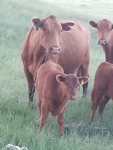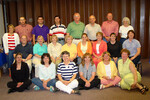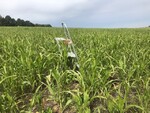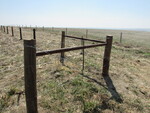Posted date: Jun 16, 2021
by: Admin My Local Life
731 Views
Release Date: June 11, 2021
Contact: Richard A. Jenkins, (916) 735-1500, Richard.Jenkins@sba.gov
Release Number: KS 16781-02
Follow us on Twitter [1], Facebook [2], Blogs [3] & Instagram [4]
Deadline Approaching in Kansas for SBA Working Capital Loans Due to Excessive Rain, Flash Flooding and Flooding
SACRAMENTO, Calif. – Director Tanya N. Garfield of the U.S. Small Business Administration's Disaster Field Operations Center-West today reminded small non-farm businesses in three Kansas counties and neighboring counties in Colorado and Nebraska of the July 12, 2021, deadline to apply for an SBA federal disaster loan for economic injury. These low-interest loans are to offset economic losses because of reduced revenues caused by excessive rain, flash flooding and flooding in the following primary county that occurred July 23‑24, 2020.

Primary Kansas county: Cheyenne;
Neighboring Kansas counties: Rawlins and Sherman;
Neighboring Colorado counties: Kit Carson and Yuma;
Neighboring Nebraska county: Dundy.
According to Garfield, small non-farm businesses, small agricultural cooperatives, small businesses engaged in aquaculture and most private nonprofit organizations of any size may apply for Economic Injury Disaster Loans of up to $2 million to help meet working capital needs caused by the disaster. "Economic Injury Disaster Loans may be used to pay fixed debts, payroll, accounts payable and other bills that cannot be paid because of the disaster’s impact," said Garfield.
"SBA eligibility covers both the economic impacts on businesses dependent on farmers and ranchers that have suffered agricultural production losses caused by the disaster and businesses directly impacted by the disaster. Economic injury assistance is available regardless of whether the applicant suffered any property damage," Garfield added.
The interest rate is 3 percent for businesses and 2.75 percent for private nonprofit organizations with terms up to 30 years. Loan amounts and terms are set by SBA and are based on each applicant’s financial condition.
By law, SBA makes Economic Injury Disaster Loans available when the U.S. Secretary of Agriculture designates an agricultural disaster. The Secretary declared this disaster on Nov. 12, 2020.
Businesses primarily engaged in farming or ranching are not eligible for SBA disaster assistance. Agricultural enterprises should contact the Farm Services Agency about the U.S. Department of Agriculture assistance made available by the Secretary's declaration.
Applicants may apply online, receive additional disaster assistance information and download applications at https://disasterloanassistance.sba.gov/ [5]. Applicants may also call SBA's Customer Service Center at (800) 659-2955 or email disastercustomerservice@sba.gov for more information on SBA disaster assistance. Individuals who are deaf or hard‑of‑hearing may call (800) 877-8339. Completed applications should be mailed to U.S. Small Business Administration, Processing and Disbursement Center, 14925 Kingsport Road, Fort Worth, TX 76155.
###
About the U.S. Small Business Administration
The U.S. Small Business Administration makes the American dream of business ownership a reality. As the only go-to resource and voice for small businesses backed by the strength of the federal government, the SBA empowers entrepreneurs and small business owners with the resources and support they need to start, grow or expand their businesses, or recover from a declared disaster. It delivers services through an extensive network of SBA field offices and partnerships with public and private organizations. To learn more, visit www.sba.gov [6].
Links:
------
[1] http://www.twitter.com/SBAgov
[2] http://www.facebook.com/sbagov
[3] http://www.sba.gov/blogs
[4] https://www.instagram.com/sbagov/
[5] https://disasterloanassistance.sba.gov/
[6] http://www.sba.gov








